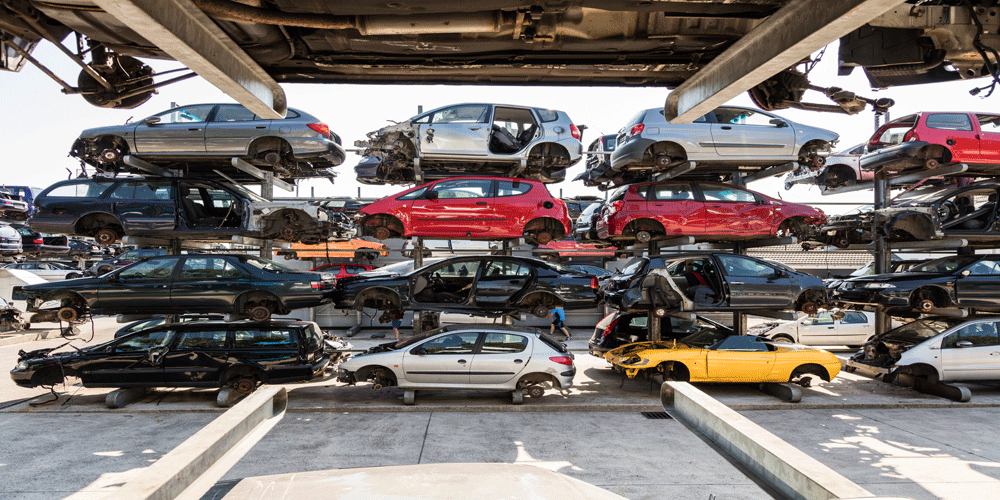Visiting Your Local Vehicle Scrap Yard
Visiting a vehicle scrap yard is like stepping into a labyrinth of automotive history. The sight of discarded cars, stacked metal parts, and the faint smell of oil can evoke both curiosity and melancholy. It’s a place where stories of once-beloved vehicles and their journeys come to an end, yet new tales of recycling, salvage, and repurposing emerge. Here’s a comprehensive exploration of what you might experience when visiting your local vehicle scrap yard.
Understanding the Landscape
Vehicle scrap yards, also known as junkyards or salvage yards, are repositories for vehicles that have reached the end of their functional lives. These yards are more than just graveyards for cars; they are bustling centers for salvaging reusable parts, recycling materials, and reducing environmental impact.
The Journey Begins: Entry and First Impressions
As you step onto the grounds of a scrap yard, the sight can be overwhelming. Towers of twisted metal, rows of cars piled atop each other, and the symphony of clinking and clanking fill the air. Most scrap yards have designated areas for different types of vehicles—sedans, trucks, SUVs, etc.—carefully organized for efficiency.
The Art of Salvage
Walking through the aisles of scrapped vehicles feels like walking through history. Each car tells a story, from the vintage classics of bygone eras to the modern marvels now reduced to piles of steel. It’s not uncommon to find cars that were once luxurious or iconic now resting in a state of decay, waiting to be disassembled.
Unearthing Treasures: Parts and Components
One of the primary functions of a vehicle scrap yard is salvaging parts that can be reused. It’s a treasure hunt of sorts, where enthusiasts and mechanics search for specific components to breathe life into other vehicles. From engines and transmissions to smaller parts like mirrors and door handles, the yard holds a trove of possibilities.
The Recycling Process: Environmental Impact and Sustainability
Beyond salvaging usable parts, scrap yards play a crucial role in recycling materials. Metals like steel, aluminum, and copper are extracted and sent for recycling, reducing the need for new production. This eco-friendly aspect of scrap yards aligns with the growing emphasis on sustainability and reducing the carbon footprint of the automotive industry.
A Glimpse into Operations: How Scrap Yards Work
Understanding the operations within a scrap yard sheds light on the intricacies of their functioning. From the initial intake of vehicles to the processes involved in dismantling, crushing, and recycling, each step contributes to the efficiency of salvaging usable parts and recycling materials.
The People and Stories
The individuals working in a scrap yard possess a wealth of knowledge about vehicles and their components. Their experiences range from identifying rare parts to understanding the inner workings of different models. Engaging with them can unveil fascinating stories about the cars that have passed through their hands.
Challenges and Opportunities
Despite their essential role in recycling and salvaging, scrap yards face challenges. Environmental regulations, fluctuating metal prices, and the increasing complexity of modern vehicles pose hurdles. However, these challenges also present opportunities for innovation and adapting processes to meet evolving demands.
Reflections and Takeaways
Visiting a vehicle scrap yard is not merely about witnessing the end of a car’s life but understanding the intricate cycle of reuse and recycling. It fosters an appreciation for the longevity of automotive components and the importance of sustainable practices within the industry.
A Journey Through Time and Sustainability
A trip to your local vehicle scrap yard is more than just a visit to a repository of discarded cars. It’s an exploration of history, sustainability, and the intricate processes involved in vehicle salvaging and recycling. It’s a reminder that even in the twilight of their existence, vehicles continue to contribute to the cycle of reuse, showcasing the potential for environmental responsibility within the automotive world.
Whether you’re an automotive enthusiast, a DIY mechanic, or someone intrigued by the intersection of history and sustainability, a visit to a vehicle scrap yard can be an eye-opening experience. It’s a place where the past meets the present, and where discarded vehicles find new life through recycling and salvage.
